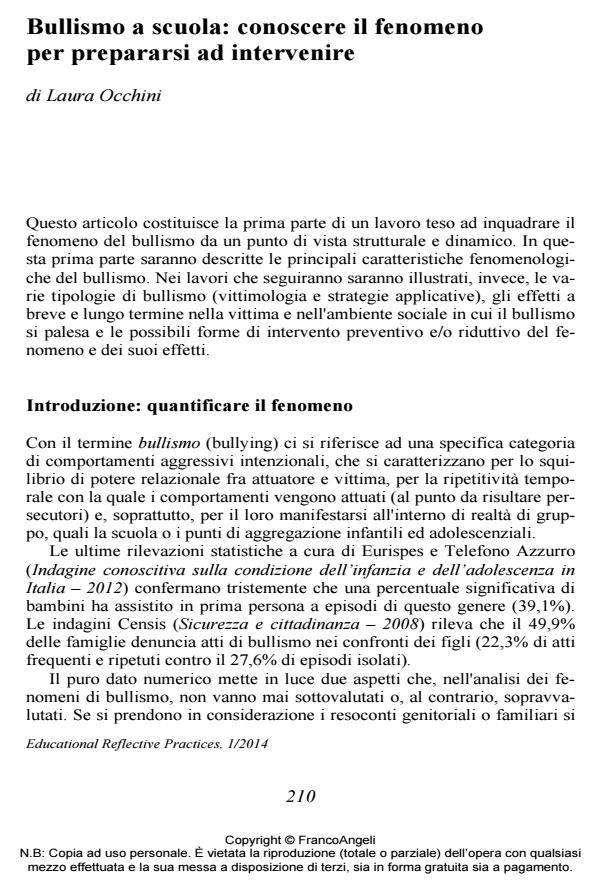Bullismo a scuola: conoscere il fenomeno per prepararsi ad intervenire
Journal title EDUCATIONAL REFLECTIVE PRACTICES
Author/s Laura Occhini
Publishing Year 2015 Issue 2014/1
Language Italian Pages 14 P. 210-223 File size 61 KB
DOI 10.3280/ERP2014-001013
DOI is like a bar code for intellectual property: to have more infomation
click here
Below, you can see the article first page
If you want to buy this article in PDF format, you can do it, following the instructions to buy download credits

FrancoAngeli is member of Publishers International Linking Association, Inc (PILA), a not-for-profit association which run the CrossRef service enabling links to and from online scholarly content.
This paper is the first part of a work that is committed to define bullying from structural and dynamic perspectives. In this part I will describe the main phenomenological characteristics of bullying: quantifying, peculiarity and key players. In the following parts, I will consider the different forms of bullying (victimology and application strategies), the short and longterm effects, the victim and the social setting in which bullying occurrs and the possible forms of preventive intervention and/or reduction of its effects.
Laura Occhini, Bullismo a scuola: conoscere il fenomeno per prepararsi ad intervenire in "EDUCATIONAL REFLECTIVE PRACTICES" 1/2014, pp 210-223, DOI: 10.3280/ERP2014-001013